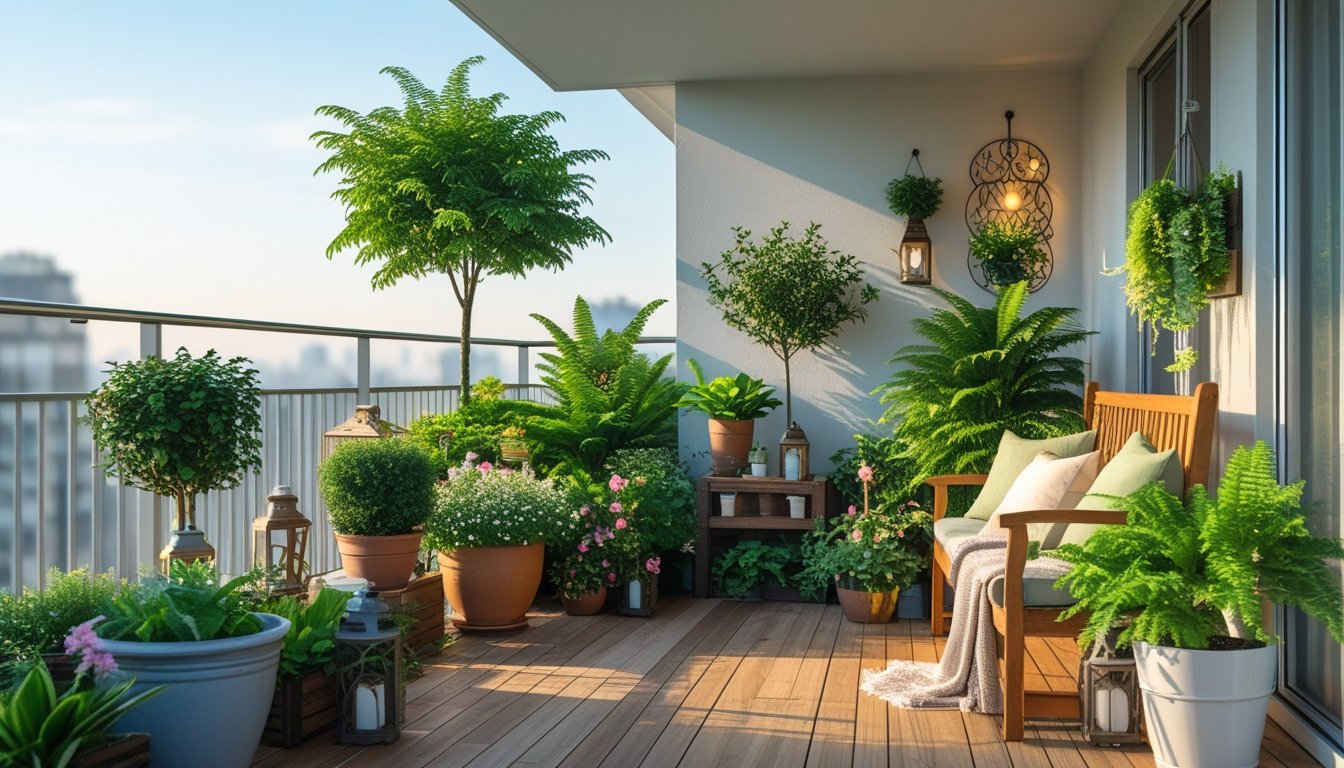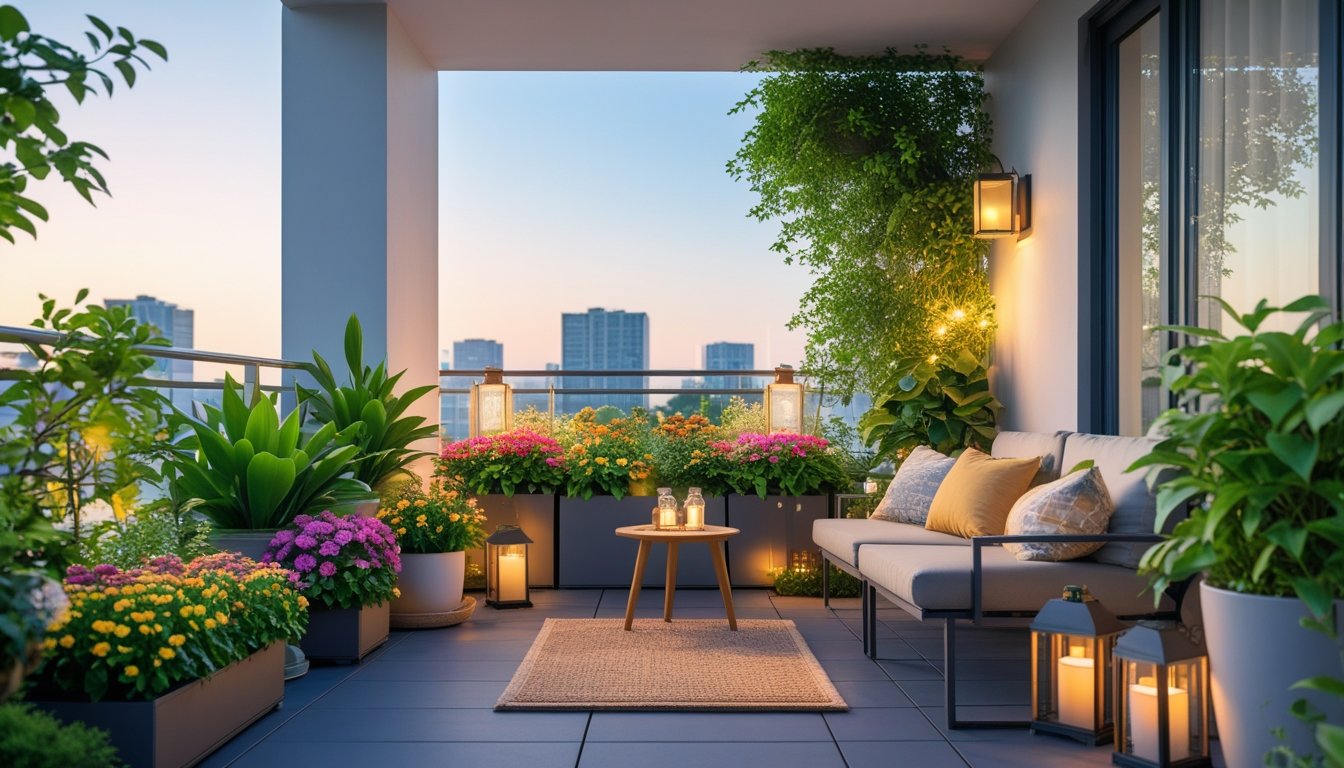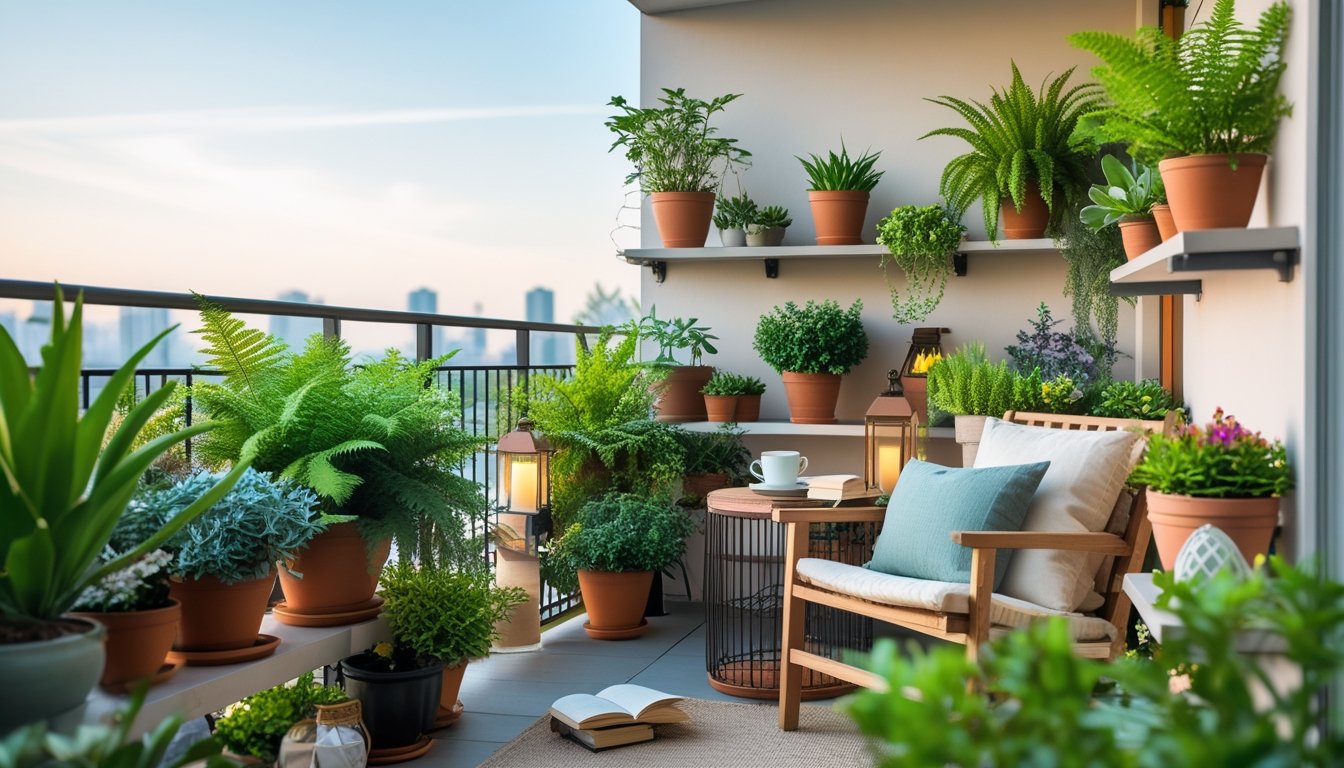Late updated: 02 Oct 2025 08:10
Written by: James Whitaker
Transform Your Balcony Into A Tranquil Garden Retreat: Create Your Urban Oasis
Transforming your balcony into a tranquil garden retreat can provide a much-needed escape from the hectic pace of daily life. Whether you're working with a compact space or a more generous area, incorporating elements of greenery, cosy furnishings, and soothing lighting can make a world of difference. Creating a peaceful oasis on your balcony not only enhances your home's aesthetic appeal but also promotes relaxation and well-being.

The key to success lies in balancing practicality with ambience. For smaller balconies, selecting foldable furniture allows for flexibility without compromising on comfort. Larger spaces benefit from more substantial pieces like sofas and modern planter boxes that add both style and function. Integrating natural materials like wood and stone heightens the organic feel, transforming your outdoor space into a sanctuary.
Key Takeaways
- Transform balconies using greenery and cosy furnishings.
- Enhance ambience with natural materials and versatile furniture.
- Enjoy a personal retreat for relaxation and well-being.
Creating a Tranquil Garden Retreat on Your Balcony
Transforming your balcony into a serene garden retreat enhances your living space and offers a peaceful escape from everyday stress. Focus on maximising small spaces, selecting low-maintenance plants, incorporating vertical elements, and designing for enjoyment year-round.
Maximising Small Spaces for Balcony Gardens
Even the smallest balconies can become lush retreats with the right approach. To make the most of limited space, we should prioritise vertical elements. Wall planters and hanging pots keep the floor free, creating the illusion of space. Foldable furniture maximises flexibility, offering more room when not in use. Using mirrors is a clever trick to add a sense of depth and further expand our space visually.
Employing multipurpose furniture is another strategy. A small bench with storage, for instance, offers seating plus space for tools or plant supplies. We should also focus on defining zones within the balcony – a section for relaxation and another for plants – which lends a structured feel even to compact areas.
Selecting Low-Maintenance and Evergreen Plants
For a tranquil garden that’s easy to maintain, low-maintenance and evergreen plants are essential. Evergreen varieties like junipers offer year-round green and require minimal care. Ferns provide lush texture and thrive in shaded areas, making them ideal for balconies that don’t receive much sunlight. Herbs such as rosemary and thyme not only add fragrance but are also functional for cooking.
When choosing plants, we should consider climate compatibility to ensure they flourish with little effort. Using self-watering pots simplifies care, ensuring consistent watering even if we miss a day. Grouping plants with similar water and light needs together can optimise their health and reduce upkeep tasks.
Incorporating Vertical Gardens and Planters
Vertical gardens are perfect for transforming bare walls into vibrant displays. They allow us to maximise space by utilising vertical surfaces, especially useful in modern balcony garden setups. We can use vertical planters, trellises, or even repurpose everyday objects like ladders or shelves for plant support. Climbing plants such as ivy or jasmine can scale these structures, adding greenery without taking up floor space.
Modular wall systems provide a flexible approach to vertical gardening, allowing rearrangement to suit our evolving tastes or plant growth. Incorporating various plant textures and leaf sizes in vertical gardens creates visual interest. Mixing edibles like herbs alongside ornamentals not only beautifies the space but also offers practical benefits.
Designing for Year-Round Serenity
Creating a garden retreat equipped for all seasons requires thoughtful planning. Incorporating a mix of evergreen and seasonal plants ensures ongoing interest and vibrance. Adding elements like weatherproof furniture and cushioned seating increases comfort and usability throughout the year.
Lighting plays a key role in transforming the space as daylight fades. LED string lights or solar lanterns offer an ambient glow that makes the balcony inviting at night. Including a small water feature, such as a tabletop fountain, introduces soothing sounds, enhancing the calming atmosphere.
Finally, incorporating elements like wind chimes or outdoor rugs can add layers of comfort and appeal. By thoughtfully selecting plants and features, our balcony becomes a year-round sanctuary.
Enhancing Ambiance and Practicality for Relaxation

Creating a serene balcony retreat involves carefully balancing aesthetics and functionality. By thoughtfully integrating stylish containers, layered planting, and inviting lighting, we can maximise comfort and tranquillity.
Choosing Stylish Containers and Railing Planters
Selecting the right containers and railing planters is vital for style and functionality. Opt for rustproof materials like fibreglass or galvanised metal, combining resilience with elegance. Railing planters extend usable space, perfect for herbs or cascading plants.
Colours and finishes should align with our home's exterior, while a mix of shapes and sizes allows us to create visual interest. Incorporating self-watering options helps maintain plant health with less upkeep. Placing succulents in these containers offers low-maintenance greenery with stunning visual impact.
Layering with Hanging Baskets and Planters
Layering is key to enhancing depth and richness. Hanging baskets are perfect for introducing height, with vibrant blooms and trailing vines enhancing vertical space. When paired with railing planters, we achieve a lush, multi-tiered garden effect.
Consider using durable materials such as woven baskets or ceramic pots, which can endure changing temperatures. For a varied look, mix flowering plants with foliage-rich options like ferns or ivy. Hanging planters attached at different heights create a dynamic appearance, drawing the eye upwards, which can make smaller spaces feel expansive.
Adding Illumination and Water Features
Lighting can profoundly transform a space's atmosphere. Strategically placing lanterns or string lights adds warmth and charm, ideal for evening relaxation. Battery-operated or solar options ensure safety and energy efficiency.
Introducing a small water feature like a wall-mounted fountain can create soothing sounds that promote calm. Such features add a natural element that complements the green surroundings. Ensure our water features are proportionate to the space, avoiding overwhelming the overall design. Incorporating reflective surfaces can enhance lighting effects and help the area feel more open.
Utilising Climbing Vines for Privacy and Greenery
Climbing vines are excellent for creating privacy without sacrificing beauty. Species like jasmine or clematis offer lush growth and fragrant flowers, making them popular choices. Trellises or vertical gardens allow us to guide these climbers along defined paths.
Positioning vines strategically can shield areas from view while simultaneously enhancing green coverage. These installations work particularly well on balconies with limited ground space. As they grow, vines naturally soften the hard lines of our balcony architecture, connecting us more intimately with nature.
By weaving these elements together, we forge a space that nurtures both the body and soul.
Frequently Asked Questions

Creating a serene balcony retreat involves selecting suitable plants, optimising limited spaces, and ensuring privacy. Lighting and seasonal maintenance play a significant role in maintaining the atmosphere.
What are the best plants to create a peaceful balcony garden atmosphere?
Choosing plants like sedum, hostas, and bonsai trees can establish a tranquil ambience. These low-maintenance options thrive in most climates. Incorporating fragrant herbs and delicate flowers adds refreshing aromas and visual interest.
How can one maximise space on a small balcony for a garden retreat?
Vertical gardening techniques, such as hanging pots and using railing planters, are effective. Additionally, stacking shelves and tiered plant stands allow us to host more plants without crowding.
What are the essential elements to consider when designing a balcony garden?
Natural materials and minimalist design create a calming effect. Incorporating essential furniture made from wood or bamboo, along with a simple water feature, can enhance the sense of tranquillity.
Could you suggest effective ways to ensure privacy in a balcony garden?
Using tall plants like bamboo, trellises with climbing vines, or privacy screens can provide seclusion. Additionally, incorporating outdoor curtains or partitions helps create a more intimate space.
What lighting options are recommended to enhance a balcony garden's ambience in the evening?
Fairy lights and solar-powered lanterns are perfect for a warm glow. Using adjustable LED spotlights highlights distinct areas and adds depth to the garden at night.
How does one maintain a balcony garden throughout the changing seasons?
Select plants that match seasonal changes in light and temperature. Moving pots indoors during extreme weather and regular pruning can help maintain health. Mulching protects roots from cold, while proper irrigation supports growth during dry spells.
